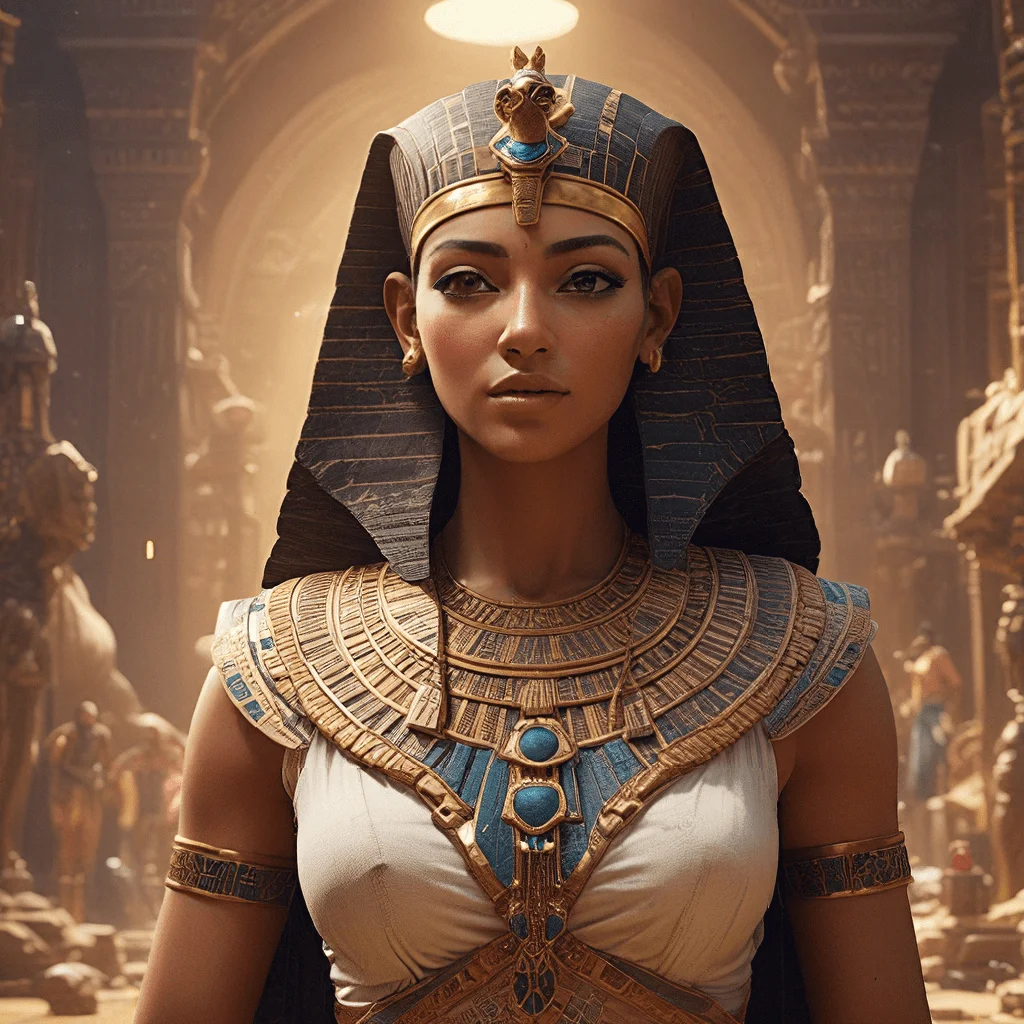The Egyptian Cosmos: A Quiz and Interactive Game
1. Introduction to the Egyptian Cosmos
Ancient Egyptians held a deep respect for the cosmos, believing it to be a powerful force that shaped their lives. The vastness of the sky, the relentless sun, and the mysterious stars all held immense meaning and influence in their culture and belief system. Understanding the Egyptian cosmos means delving into their intricate myths and understanding how they interpreted the world around them.
Egyptian mythology is full of stories about gods, goddesses, and magical creatures who inhabit the cosmos. These stories provided explanations for natural phenomena, set moral codes, and guided their understanding of life, death, and the afterlife.
2. The Earth: Geb and Nut
In Egyptian mythology, the earth was personified by Geb, the god of the earth. Geb was a giant, powerful god, often depicted as a man lying on his back with his body forming the earth. The sky goddess Nut was Geb’s wife and counterpart. She arched over him, forming the heavens, her body stretching across the sky from horizon to horizon.
According to ancient myths, Geb and Nut were so deeply in love that their union created the world. Their children, the gods Osiris, Isis, Set, and Nephthys, represented the forces of nature and the essential elements of life.
3. The Sun: Ra, the Creator
The sun god Ra was one of the most important deities in the Egyptian pantheon. He was considered the creator of all things, responsible for bringing light and life to the world. Each morning, Ra would rise in the east, his golden chariot pulling him across the sky, illuminating the land. This journey symbolized the cycle of life, death, and rebirth.
Ancient Egyptians believed that Ra’s journey through the sky was a testament to his power and influence. His daily journey was a reminder that life, like the sun, was constantly in motion, undergoing cycles of change and renewal.
4. The Underworld: The Duat
The underworld, known as the Duat, was a mysterious and dangerous realm where souls traveled after death. The Duat was a complex and layered world, filled with obstacles, trials, and dangers. It was believed that the souls of the deceased had to navigate this treacherous underworld, facing judgment and challenges, in order to reach the afterlife.
The Duat was a realm of shadows and darkness, where the gods of the underworld, such as Anubis and Osiris, presided over the fate of the departed souls. The journey through the Duat was a complex and perilous one, requiring courage, wisdom, and the guidance of the gods.
5. The Stars: The Decans
The Egyptians were keen observers of the night sky, and they used their knowledge of the stars to create a sophisticated system of timekeeping and navigation. They divided the night sky into 36 sections, called decans, each named after a particular star or constellation. These decans were seen as celestial guardians who guided the souls through the underworld.
The stars played an important role in Egyptian spirituality. They believed that the stars were the souls of the gods, and they used their positions in the night sky to predict the future and guide their lives. The Egyptians used their knowledge of the stars to develop a calendar based on the cycles of the sun and the stars.
6. The Nile River: A Lifeline
The Nile River was the heart and soul of ancient Egypt. It provided the lifeblood of the civilization, offering fertile land for agriculture, transportation routes, and a vital source of water. The Egyptians saw the Nile as a divine gift, a symbol of life, fertility, and rebirth.
The annual flooding of the Nile was a crucial event for the ancient Egyptians. It deposited rich silt on the riverbanks, making the land fertile and ready for agriculture. The Nile was also seen as a sacred river, associated with the god Hapy, who personified the flooding waters.
7. The Gods and Goddesses of the Cosmos
Many Egyptian gods and goddesses were associated with the cosmos, each representing a different aspect of the heavens, earth, or underworld. Some of the most important cosmic deities included:
- Ra: The sun god, creator of all things, and ruler of the heavens
- Nut: The sky goddess, wife of Geb, and mother of the gods
- Geb: The earth god, husband of Nut, and father of the gods
- Osiris: The god of the underworld, judge of the dead, and god of rebirth
- Isis: The goddess of magic, healing, and motherhood
- Anubis: The jackal-headed god of the dead, who guided souls to the underworld
- Hathor: The goddess of love, beauty, and music
8. Interactive Quiz: Test Your Knowledge
Put your knowledge of the Egyptian cosmos to the test with our interactive quiz. This fun and engaging quiz will test your understanding of the myths, gods, and beliefs surrounding the universe in ancient Egypt. Answer the multiple-choice questions to see how much you know about this fascinating ancient civilization.
9. Interactive Game: Explore the Egyptian Cosmos
Embark on an exciting journey through the Egyptian cosmos in our interactive game. Explore the different realms, encounter legendary deities, and solve puzzles based on ancient Egyptian mythology. From the celestial heavens to the depths of the underworld, this game will bring the myths and stories to life in a new and interactive way.
10. Conclusion and Further Resources
The Egyptian cosmos was a vast and complex universe, filled with gods, goddesses, and mythical creatures. Understanding their beliefs about the cosmos provides valuable insights into their culture, their worldview, and their understanding of the world around them.
To learn more about Egyptian mythology, consider exploring additional resources such as books, documentaries, and museums. These resources can help you delve deeper into the rich and fascinating world of ancient Egyptian beliefs and stories.




